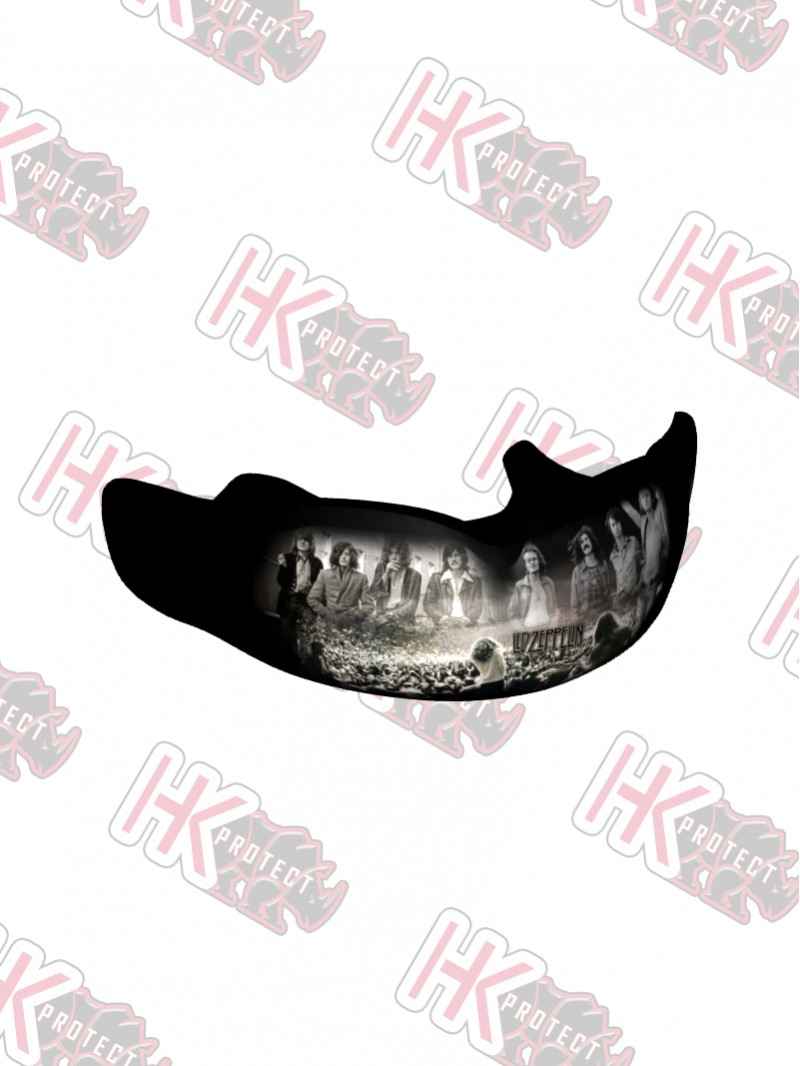

It was sort of like this private society: they didn’t want to give any of it away. “And many of the bands we worked for - I don’t care if it was 10cc or Zeppelin or Pink Floyd - embraced that secrecy. We never talked to the press about what it all meant. “Now the thing for me is the mystery and the narrative … and Storm and I would never explain that: we’d only discuss it with the artist. “What has a black object on a breakfast table with a family at a boat show got to do with anything?” Powell asked rhetorically. He used the cover for Zeppelin’s 1976 “Presence” as an example: a family of four sitting around a table with boats in the background and a monolith-like object in front of them. Powell said an air of mystery was always part of the equation. There were other provocative covers that brought mystique: original shipments of Pink Floyd’s 1975 gem “Wish You Were Here” were encased in black shrink-wrap - you had to buy the album to see the cover - while Led Zeppelin’s 1979 “In Through the Out Door” sported six different covers, all of them wrapped in brown paper bags. And we never worked with record companies we always worked for the artist.”

“We’re not going to design things as if it was for a product and we weren’t going to be influenced by record companies. “Our way of thinking was that we were not going to be commercially minded,” Powell said. Thorgerson and Powell were more interested in good art. The designers’ way of conducting business was often the bane of record company marketing departments, because Hipgnosis’s objectives were the opposite of selling albums.

We would design something and say, ‘This is a great image, now who can we sell it to?’ Led Zeppelin might reject it, but then 10cc might buy it.” “And many of the images that Hipgnosis designed were not necessarily designed for the band. Let’s go lateral and think completely differently,’” Powell said. “When we started to do album covers, the first thing that we said was no pictures of the band on the front no titles or credits no names. Hipgnosis were indeed different: graphic designer Thorgerson - who died in 2013 at the age of 69 from cancer - and photographer Powell were embraced for their out-of-the-box thinking, especially by the artists to whom they sold their concepts.Ĭase in point: the Pink Floyd album cover for 1970’s “Atom Heart Mother,” a photo of a cow in a barnyard with no artist name or title anywhere on the artwork (subsequent editions, especially when CDs came along, provided both). I think it’s a very dangerous drug and, if used in the wrong circumstances, can be extremely damaging.” But what LSD did - the trips that Storm and I took together - was to just sort of open one’s mind to alternatives and to a different way of looking at things. “I think that would be too presumptuous and too pretentious. “I don’t suppose for one second that Hipgnosis couldn’t have done what we did without LSD,” Powell said. It was also a scene where experimenting with drugs such as LSD was common, although Powell insists that the intake of chemicals by Thorgerson and himself was short-lived. It was an experimental time for Pink Floyd, when founding guitarist and singer Syd Barrett was pretty much out of the band, and guitarist and singer David Gilmour was working his way in: Gilmour’s debut, 1968’s “A Saucerful of Secrets,” was Hipgnosis’s first commissioned album cover. “I’ve known them since I was 15,” said Powell, 76, during a recent phone interview from New York, where he was helping to promote a new documentary by acclaimed Dutch photographer and director Anton Corbijn called “Squaring the Circle (The Story of Hipgnosis),” currently playing at the Carlton Cinema in Toronto.

Hipgnosis was born from Pink Floyd’s numerous counterculture hangs with Thorgerson and Powell during their art school years. The illustrated magnum opus that is 10cc’s “The Original Soundtrack”? You guessed it. Paul McCartney and Wings’ brilliant “Band on the Run” artwork? Hipgnosis. The cover of Led Zeppelin’s 1973 classic “Houses of the Holy”? Hipgnosis. British progressive rock legends Pink Floyd may be known for such masterpieces as “Dark Side of the Moon” and “The Wall,” but they were also responsible for launching the most distinctive, popular and influential creators of album artwork in the mid to late 20th century: Hipgnosis.īetween 19 - at a time when vinyl was king and 12-by-12-inch artwork was a key part of the packaging - the British art design group co-founded by visual artists Storm Thorgerson and Aubrey “Po” Powell created more than 250 album covers for rock superstars ranging from Led Zeppelin and Paul McCartney to 10cc and the Alan Parsons Project.


 0 kommentar(er)
0 kommentar(er)
